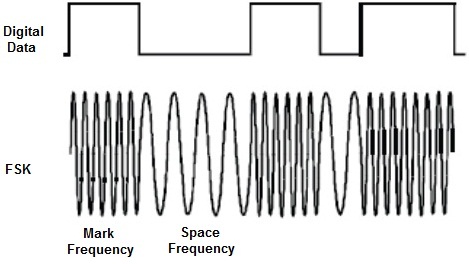To study Frequency Shift Keying ( FSK ) & to obtain FSK of 2 KHz Digital signal.
Frequency division multiplexing ( FDM ) allows a channel to be shared among a set of users. Recall that this is achieved by superimposing the message onto a carrier signal inside the user's allocated portion of the radio-frequency spectrum. Recall also that any of the analog modulation schemes can be used to transmit digital data in this way. When frequency modulation ( FM ) is used it is known as Binary Frequency Shift Keying ( BFSK ) or more commonly just FSK.
One of the reasons for using FSK is to take advantage of the relative noise immunity that FM enjoys over AM. Recall that noise manifests itself as variations in the transmitted signal's amplitude. These variations can be removed by FM/FSK receivers by a circuit called a limiter without adversely affecting the recovered message.
Fig.1 below shows what an FSK signal looks like time-coincident with the digital signal that has been used to generate it.
 |







